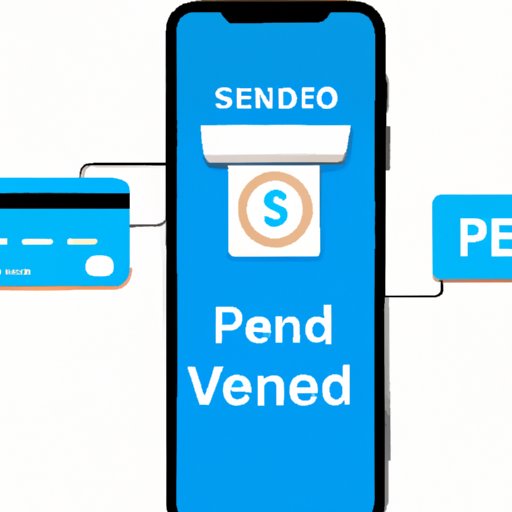
Introduction
Are you tired of the hassle of withdrawing cash, writing checks, or running to the bank? Sending money to family and friends has never been easier with Venmo. Venmo is a mobile payment service that lets you pay and request money from people in your phone’s contacts list. In this article, we’ll take you through the step-by-step guide of how to send money to Venmo, the fees associated with different methods, and the security measures to keep your account safe.
Step-by-Step Guide
The first step in sending money to Venmo is downloading the app on your smartphone.
Then, register an account and link it to your bank account or credit/debit cards.
To send money, enter the amount you want to send and the recipient’s username, email, or phone number.
Verify the details and send the payment. The recipient will receive the money in their Venmo account and can transfer it to their bank account.
Using a Bank Account
Linking your bank account to Venmo is the most cost-effective way to send money. It’s also the easiest and quickest way to deposit money into your Venmo account for future payments.
To link a bank account, click on the “☰” icon on the top left corner of your Venmo app, then tap on “Settings.”
Select “Payment Methods” then “Add a Bank” and follow the instructions to input your bank information.
When sending money using your bank account, there are no fees associated with the transaction. However, it may take 1-3 business days for the recipient to receive the payment.
Credit and Debit Cards
Venmo accepts Mastercard, Visa, American Express, and Discover cards.
If you prefer to use a credit or debit card, link the card to your Venmo account. Click on the “☰” icon, “Settings,” then “Payment Methods,” and “Add Payment Method.” Choose the card you want to add and input the required information.
When using a credit or debit card, there is a 3% fee of the total amount sent.
However, using a credit card can be beneficial for earning points, miles, or cashback rewards. It’s essential to consider whether the cost of the fees is worth the possible rewards.
P2P Payment Apps
Venmo is not the only P2P payment app out there. Other popular apps include PayPal, Zelle, and Cash App.
PayPal charges a 2.9% + $0.30 fee for sending money using a credit or debit card.
Zelle can transfer money directly between bank accounts and only requires the email or phone number of the recipient. However, Zelle is limited to a few participating banks.
Cash App allows you to send and receive money and invest in stocks or cryptocurrency. But, it has a 3% fee for credit card transactions.
It’s essential to compare the fees, availability, and convenience of each app to see which option is best for you.
QR Codes
Venmo also offers the QR code feature to allow users to exchange payments easily.
The QR code is a unique bar code that can be displayed on your phone or printed on a piece of paper. The recipient can scan the code with their smartphone camera, and the payment will automatically process.
To use this feature, click on the “☰” icon in the Venmo app, then tap on “Scan” to scan the recipient’s QR code.
This feature is convenient for payments made in-person or when the recipient doesn’t want to share their personal information.
Budgeting with Venmo
The Venmo app has budgeting features that allow you to split bills, request and remind payments, and keep track of payments.
The split bill feature allows you to select who needs to pay and how much each person owes. Venmo will keep track of payments made by each person and send reminders to anyone who has not paid their share.
Requesting payment sends a reminder to the recipient that they owe you money. You can also customize the reminder to include a friendly note or a payment request for a specific event or purpose.
The payment tracking feature gives you an overview of payments made and received in your account. This feature can help you keep track of your spending and budget more effectively.
Security Measures
Venmo takes security seriously and has measures to protect your account information and transactions.
Two-factor authentication requires you to enter a unique code sent via text or email in addition to your login credentials.
Account verification is done by providing your full name, address, date of birth, and the last four digits of your social security number.
Venmo also allows you to set up a PIN code for added security when making transactions.
Conclusion
Sending money to Venmo is a simple and convenient process that can be done through linked bank accounts, credit/debit cards, and QR codes. Venmo also offers features such as budgeting and payment tracking to streamline money management. With proper account security and awareness of associated fees, sending money with Venmo can be a safe and effective way to pay family and friends.





